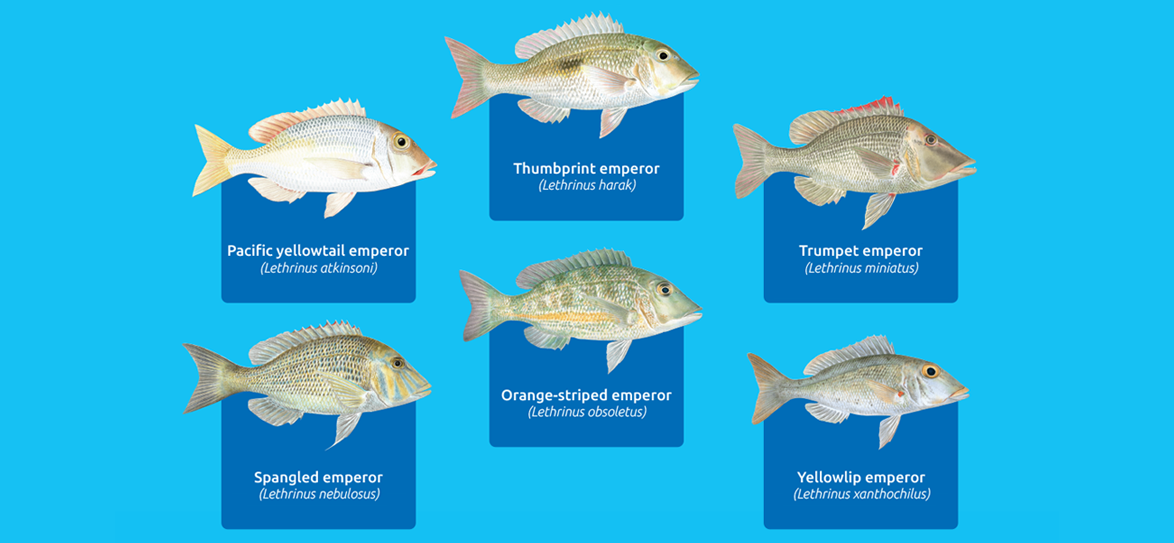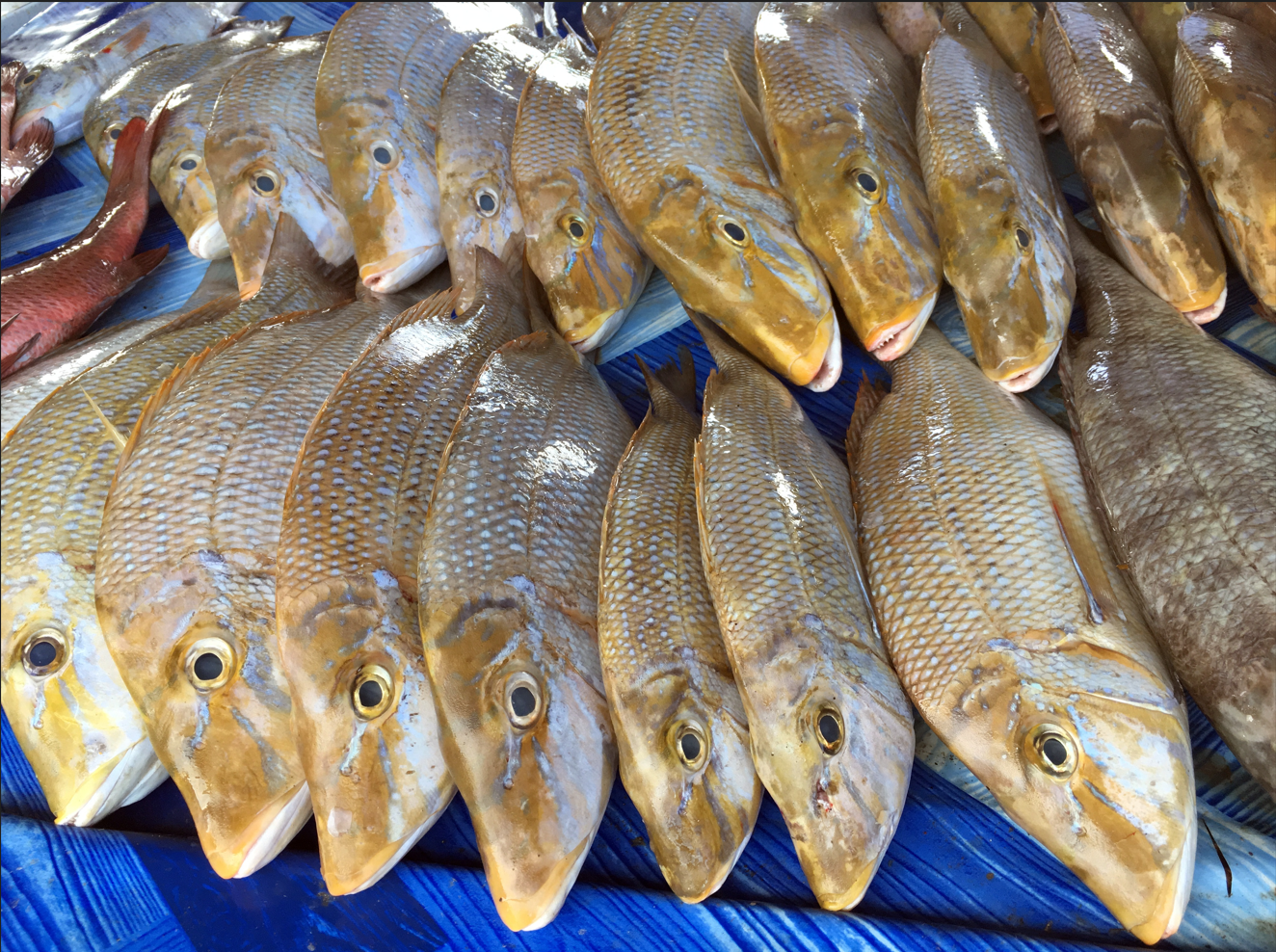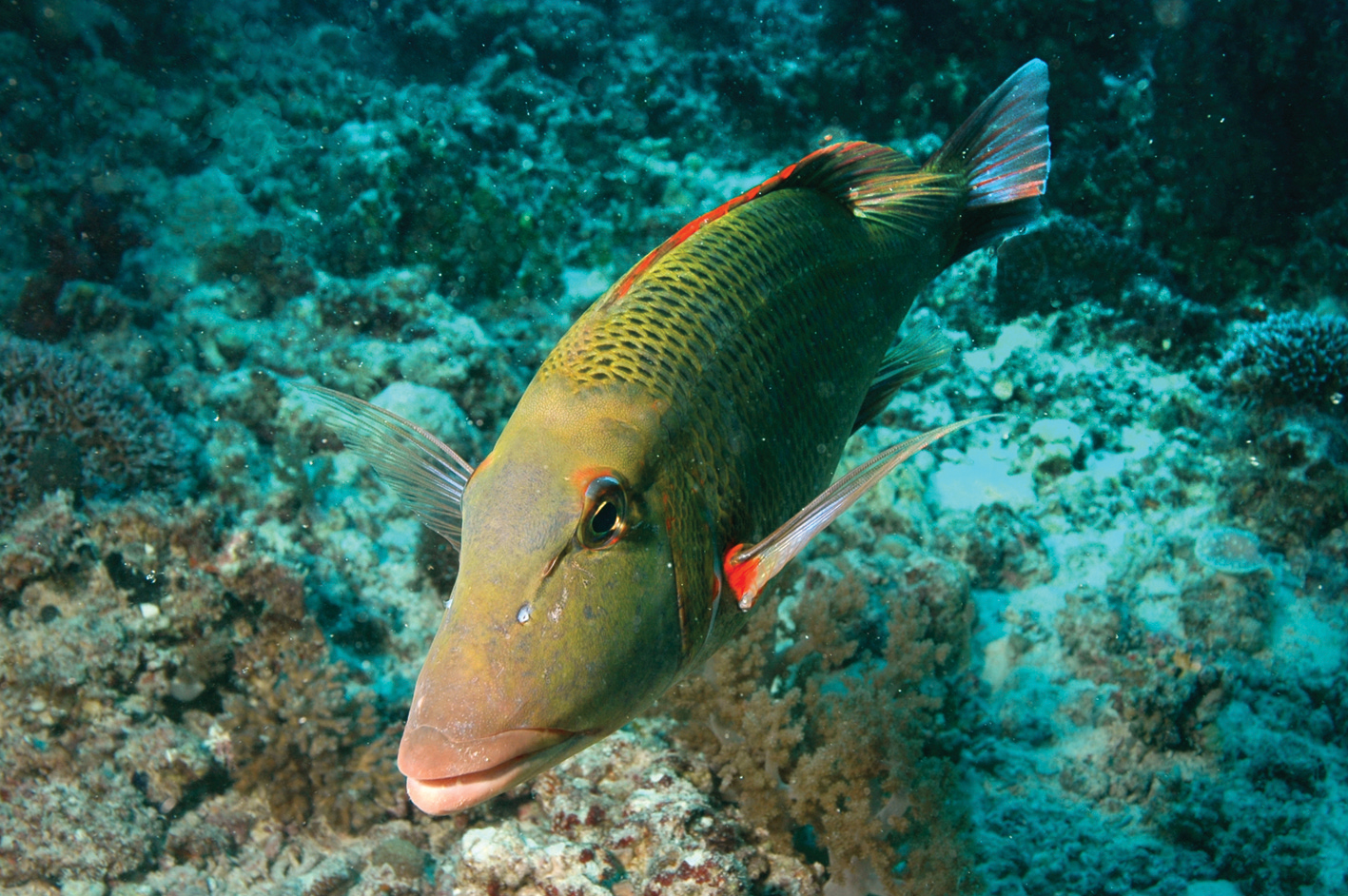Image: © Matthieu Juncker
To gain access to full information on emperors, download the information sheet produced by the LMMA Network and SPC.
If you have noticed a decline in your catches or are concerned about emperor populations, here are some priority actions the community can consider in addition to national regulations:
Fish smart rules
Tabu areas
A permanent ban on fishing in areas (sites) where spawning aggregations occur, which assumes that the community has some control over the spawning sites that may be some distance away;


Temporary bans
A temporary ban on fishing during known spawning times; as emperors spawn at various phases of the moon this may mean a series of short closures at appropriate times.
Good to know: protect breeding emperor adults
The most effective community-based management strategy for emperors is likely to involve the protection of breeding adults. Community-managed fish reserves (no-take areas) will not protect reproducing fish that migrate to spawning sites.
Good to know: size limits may not be helpful for emperors
Because emperors start life as females and later change sex to become males, most of the smaller fish caught are female and the larger ones are male. Catching large, legally-sized fish, therefore, would leave many females but very few males in the sea.
Taking into account the wide variation in sizes of the different species of emperors, these size limits would be of little use for larger species. They would not protect species such as the spangled emperor, for example, which does not reproduce until it reaches a size of about 45 cm. To be effective, size limits should be applied to particular species.
Fishing methods
Fishing methods for emperors include:
-
baited hooks and lines;
-
spearfishing, usually during the day;
-
seine nets and cast nets used in shallow lagoons;
-
gill netting is the main fishing method and is often used on spawning aggregations.
Many emperors are caught as they gather in large groups to breed (in spawning aggregations). Fishing in this way is destructive as these breeding fish are responsible for producing small fish, many of which will grow and be available to be caught in future years.
Management measures in the region
Management measures applied to fishing for emperors include limiting the numbers of people fishing, limiting the amount of fish caught (bag limits or quotas) and restricting the type of fishing gear used. These measures are generally used more in commercial fisheries than in community-based fisheries.
Several Pacific Island countries have imposed minimum size limits (between 15 and 25 cm length from the tip of the mouth to the middle of the tail) although in most cases the particular species of emperor to which the regulation applies has not been stated.
Some species

The Lethrinidae family of fish includes about 20 different species of emperors, which are found almost entirely in the tropical waters of the Indian and Pacific oceans. Features common to all species include thick lips, strong jaws, and cheeks without scales.
In the Pacific Islands, two common species are the spangled emperor, Lethrinus nebulosus, which has blue spots on its body and blue lines below its eyes, and the sweetlip emperor, Lethrinus miniatus, which has a grey body with red areas near its eyes, mouth and fins.
Most species of emperors live on coral reefs or areas associated with them, including sandy areas and seagrass beds in lagoons. Some species live on rocky reefs down to depths of more than 200 m. The juveniles of some species live in shallow seagrass and mangrove areas.
Emperors are bottom-feeding fish that eat sea snails, crabs, sea urchins, worms and many other animals that live on the sea floor. Some of the larger species feed on other fish. They are eaten by a range of larger fish including sharks.
Most species of emperors begin life as females and change sex to become males as they grow. In general, common species of emperors reach reproductive maturity at 30 to 50 per cent of their lifespan. The spangled emperor, for example, grows to a maximum of 90 cm over a lifespan of about 25 years and reaches reproductive maturity at a length of about 45 cm in 8 to 9 years.
Spawning aggregations may occur at the time of the new moon or the full moon in particular months. These aggregations occur in various places, including the edges of barrier reefs and in channels and passages. Each female releases many thousands of eggs and these are fertilised by sperm released by males.
In most reef-associated emperors, fertilised eggs hatch within a day or two into small forms (larval stages) that drift with currents for about a month. Less than one in every thousand of these survives to settle on reefs as a juvenile. And less than one in every hundred juveniles survives the 8 to 9 years it takes to become a mature adult.
Related resources

To gain access to full information on Emperors, download the information sheet.

